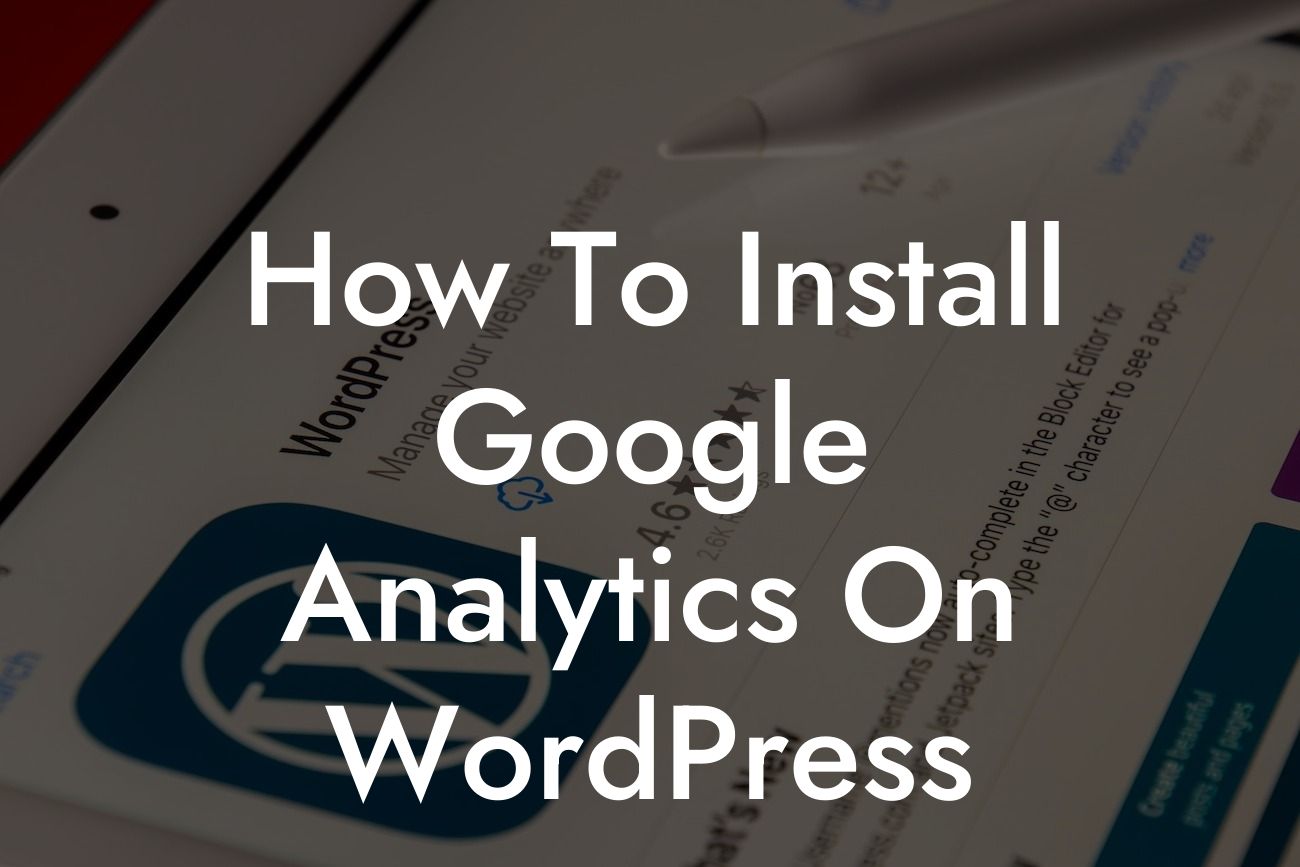Are you a small business owner or an entrepreneur looking to boost your online presence and track your website's performance? Look no further! In this comprehensive guide, we will walk you through the step-by-step process of installing Google Analytics on your WordPress website. By the end of this article, you will have the necessary tools to measure and analyze your website's success, enabling you to make data-driven decisions and drive your business forward.
H2 Heading: Why Google Analytics is Essential for Your WordPress Website
Using suitable headings and subheadings throughout the article will make it easy for readers to navigate and understand the content. In this section, we’ll explain the significance of Google Analytics and its impact on your online success.
H3 Heading: Understanding Google Analytics
Here, we’ll provide a brief overview of Google Analytics, including its purpose, features, and the invaluable insights it offers. We’ll also touch on the specific benefits of using Google Analytics for your WordPress website.
Looking For a Custom QuickBook Integration?
H2 Heading: Step-by-Step Guide to Install Google Analytics on WordPress
Now comes the exciting part – installing Google Analytics on your WordPress website. In this section, we’ll break down the steps into easy-to-follow instructions.
H3 Heading: Step 1: Creating a Google Analytics Account
We’ll guide you through the process of setting up a Google Analytics account, from signing up to creating a property for your WordPress website. This step is crucial for collecting and organizing data effectively.
H3 Heading: Step 2: Obtaining Your Tracking ID
Once your Google Analytics account is set up, we’ll show you how to obtain your unique tracking ID. This ID will be essential for the actual installation on your WordPress website.
H3 Heading: Step 3: Installing Google Analytics Plugin on WordPress
To make things even simpler, we’ll introduce you to some fantastic Google Analytics plugins specifically designed for WordPress. We’ll recommend the most efficient and user-friendly options, guiding you through the installation process seamlessly.
H3 Heading: Step 4: Configuring the Plugin
After installing the plugin, we’ll explain how to configure it to ensure accurate tracking and optimal functionality. This step will help you master the advanced features offered by the plugin for more detailed insights.
How To Install Google Analytics On Wordpress Example:
To help you better understand the process, let’s consider an example. Sarah, a small business owner, wants to track her website’s performance to refine her marketing strategies. By following the steps outlined in this guide, Sarah successfully installs Google Analytics on her WordPress website. She can now monitor her website's traffic, track conversions, and identify the most effective marketing channels.
Congratulations! You have now mastered the art of installing Google Analytics on your WordPress website. With this powerful tool at your disposal, you can now measure and analyze your website's performance with ease, empowering you to make informed decisions that drive your business forward. Don't forget to share this article with your fellow entrepreneurs and explore the other exciting guides available on DamnWoo. And if you're looking for even more functionality and customization, check out our awesome WordPress plugins designed exclusively for small businesses like yours. Supercharge your success with DamnWoo!













